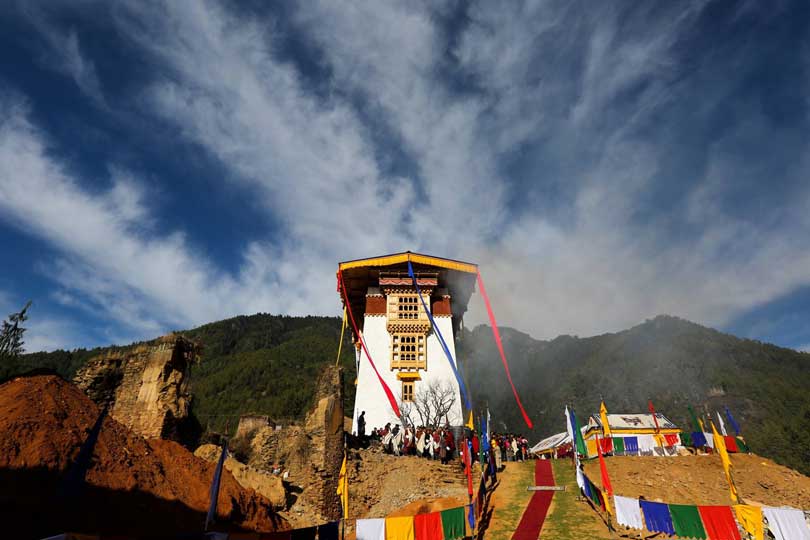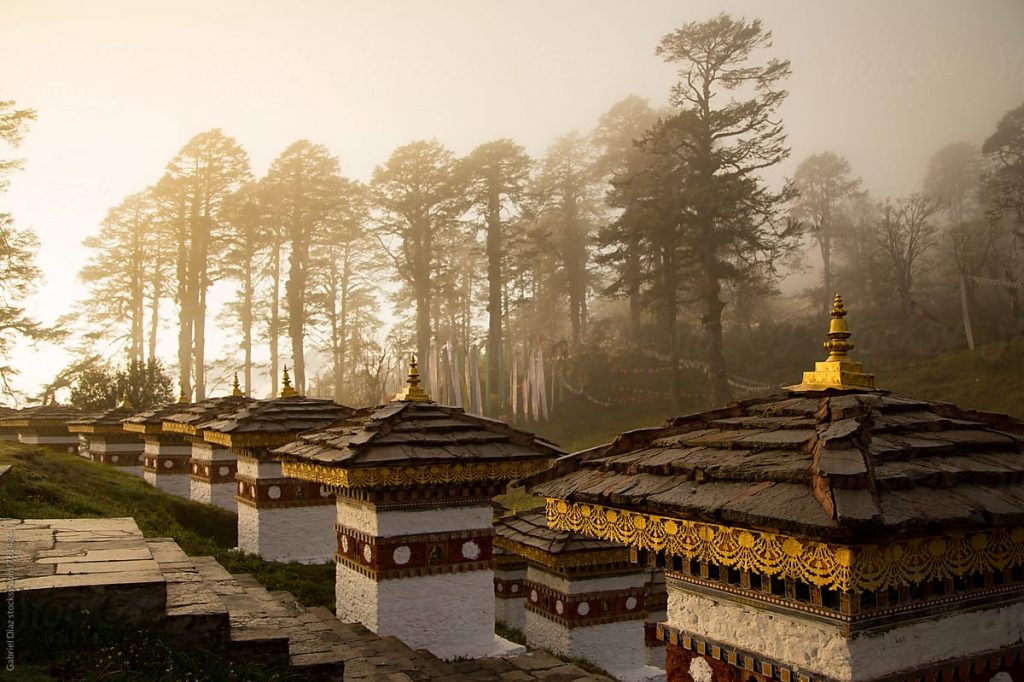
Dochula
The Dochula pass is the most well known pass in Bhutan, located an hour from Thimphu at an altitude of 10,000 feet. It is on the way to Punakha (also a favorite destination among tourists and locals alike). There are 108 stupas overlooking the Himalayas. When the sky is clear, the Mountain View is spectacular. The pass is a popular destination among tourists as it offers a stunning 360 degree panoramic view of the Himalayan mountain range
The National Memorial Chorten (stupa)
Visitors will find elderly Bhutanese people circumambulating the Chorten throughout the day. Chorten literally means ‘Seat of Faith’ and Buddhists often call such monuments, the ‘Mind of Buddha’. The chorten is an extraordinary example of Buddhist architecture and artwork with its gorgeous paintings and intricate sculptures
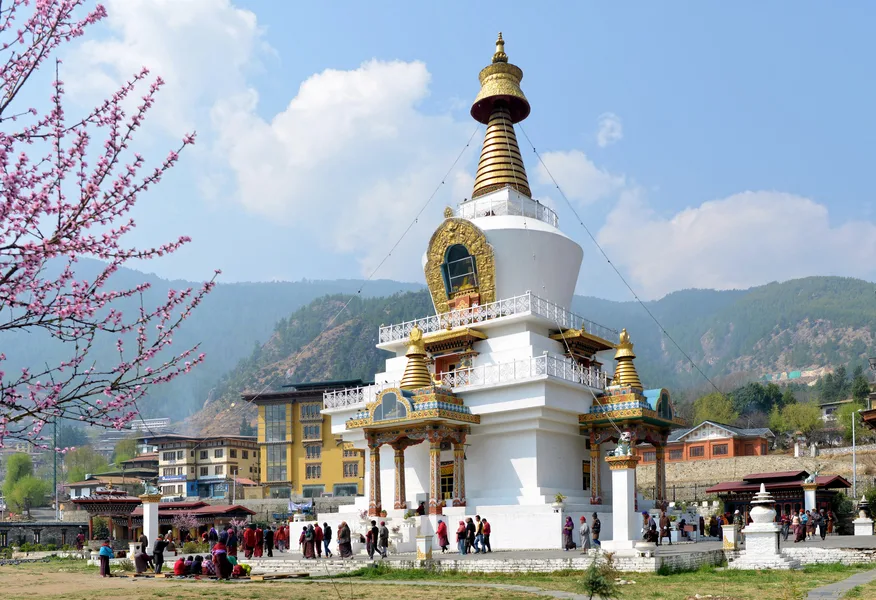
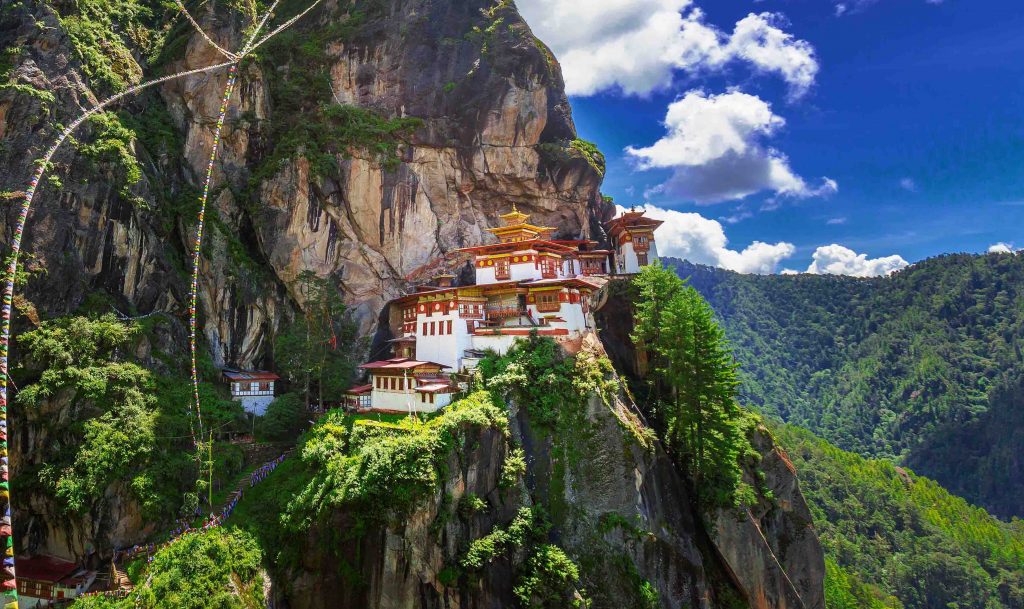
Taktshang Monastery
Taktsang Lhakhang is Bhutan’s most iconic landmark and religious site. The name Taktsang translates to “The Tiger’s Nest”. This temple is one of the most holy sites in the kingdom and clings impossibly to a sheer cliff face 900 hundred meters above the Paro Valley. It was first built in 1692 at a cave where Guru Rimpoche meditated in the 7th century A.D.
National Museum of Bhutan
It is located in the Paro district in western Bhutan. Established in 1968, the museum houses some of the finest specimens of Bhutanese art, including master pieces of bronze statues and paintings. Today, the national museum has in its possession over 3,000 works of Bhutanese art, covering more than 1,500 years of Bhutan’s cultural heritage.
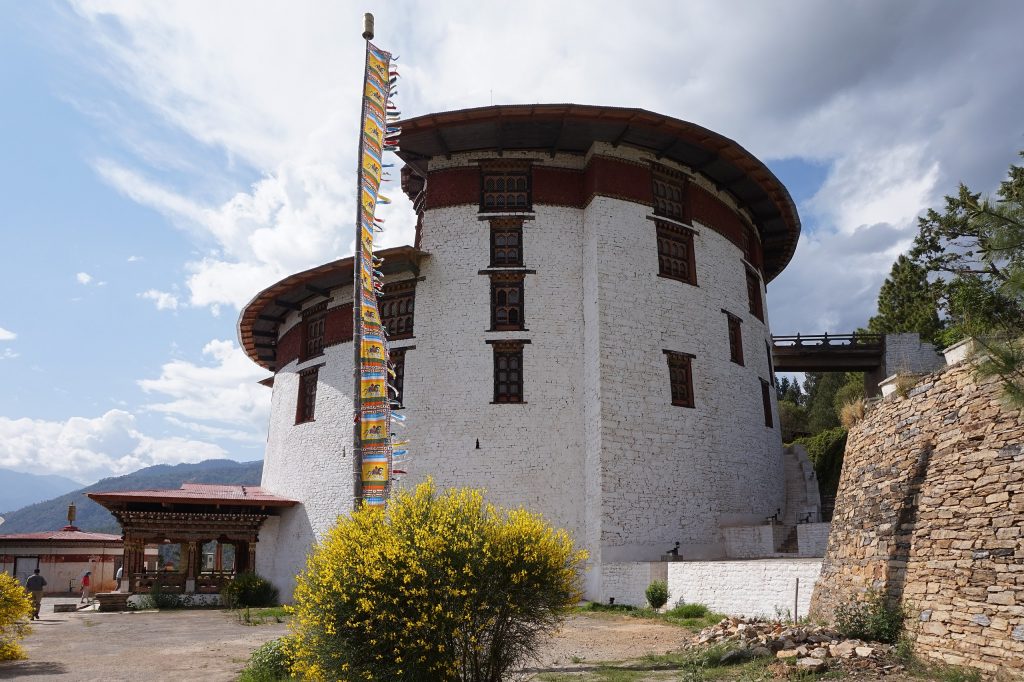
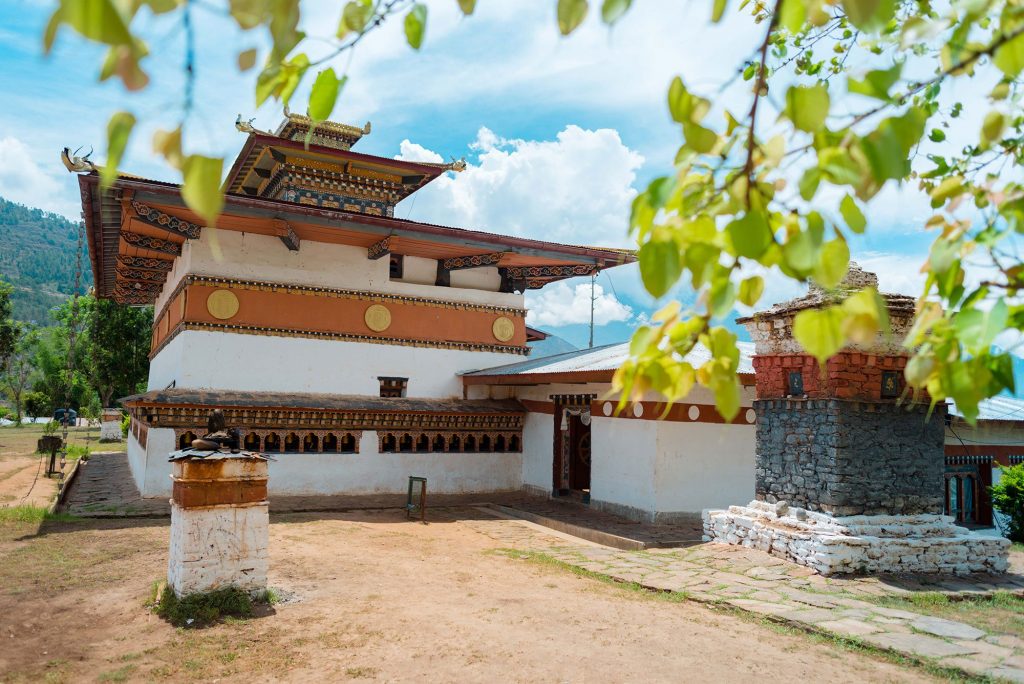
Chime Lhakhang
It is Buddhist monastery in Punakha district located near Lobesa. It stands on a hillock and was built in 1499 by 14th Drukpa hierarch, Ngawang Choegyal after the site was blessed by the ‘’divine madman’’, the maverick saint Drukpa Kuenley (1455-1529) who built a stupa on the site to suppress a demoness.
Ganteng Monastery
The Ganteng Monastery generally known as Gantey Gonpa is an important monastery of Nyinmapa school of Buddhism, the main seat of the Pema Lingpa tradition. It is located in the Phobjikha valley in the Wangdiphodrang district in central Bhutan. The monastery is one of the main seats of the religious tradition based on Pema Lingpa’s revelations and one of the two main centre’s of the Nyingmapa school of Buddhism in the country

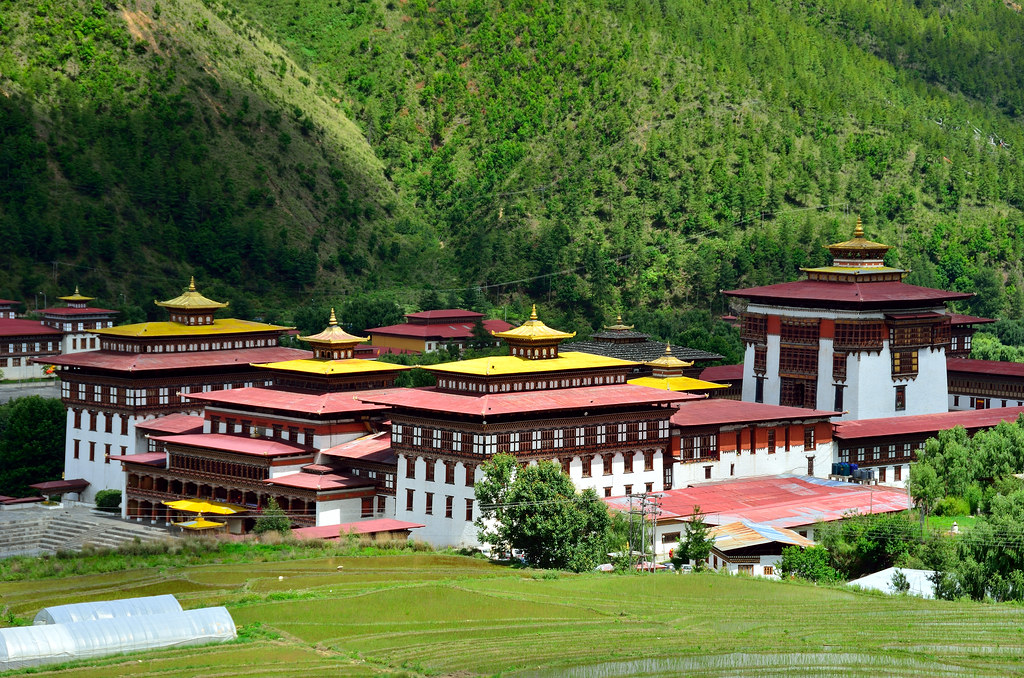
Trashi Choe Dzong
Tashichho Dzong has been the seat of the government since 1952 and presently houses the throne room and offices of the king, the secretariat and the ministries of home affairs and finance. Other government departments are housed in buildings nearby. The dzong is located close to Thimphu town, next to the banks of the Wangchhu River.
Punakha Dzong
Punakha Dzong is arguably the most beautiful dzong in the country, especially in spring when the lilac-colored jacaranda trees bring a lush sensuality to the dzong’s characteristically towering whitewashed walls. This dzong was the second to be built in Bhutan and it served as the capital and seat of government until the mid-1950s. All of Bhutan’s kings have been crowned here.
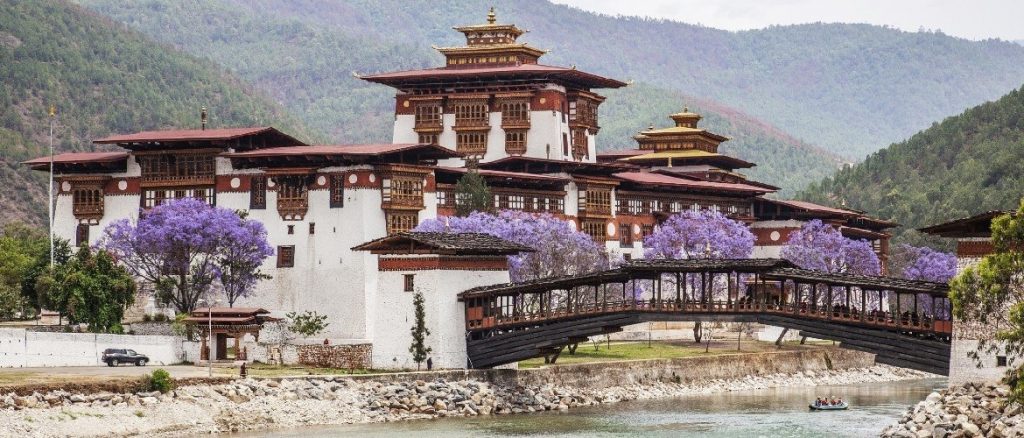

Bumthang valley
This region that spans from 2,600m-4,500m is the religious heartland of the nation and home to some of the oldest Buddhist temples and monasteries. The name Bumthang has two probable origins; the first is that it is named after a Bumpa, a vessel for holy water which the valley resembles in shape. The second origin implies that it is the Valley of Beautiful Girls as Bum translates to ‘Girl’ and Thang means ‘flat piece of land’.
Drukgyal Dzong
Drukgyal Dzong was a fortress now in ruins, located in the upper part of Paro district. The Dzong was built in 1649 to commemorate victory over an invasion from Tibet. In the early 1950s, the Dzong was completely destroyed by fire. Now the Dzong is under construction upon the command of His Majesty the Fifth King Jigme Khesar Namgyal Wangchuck.
